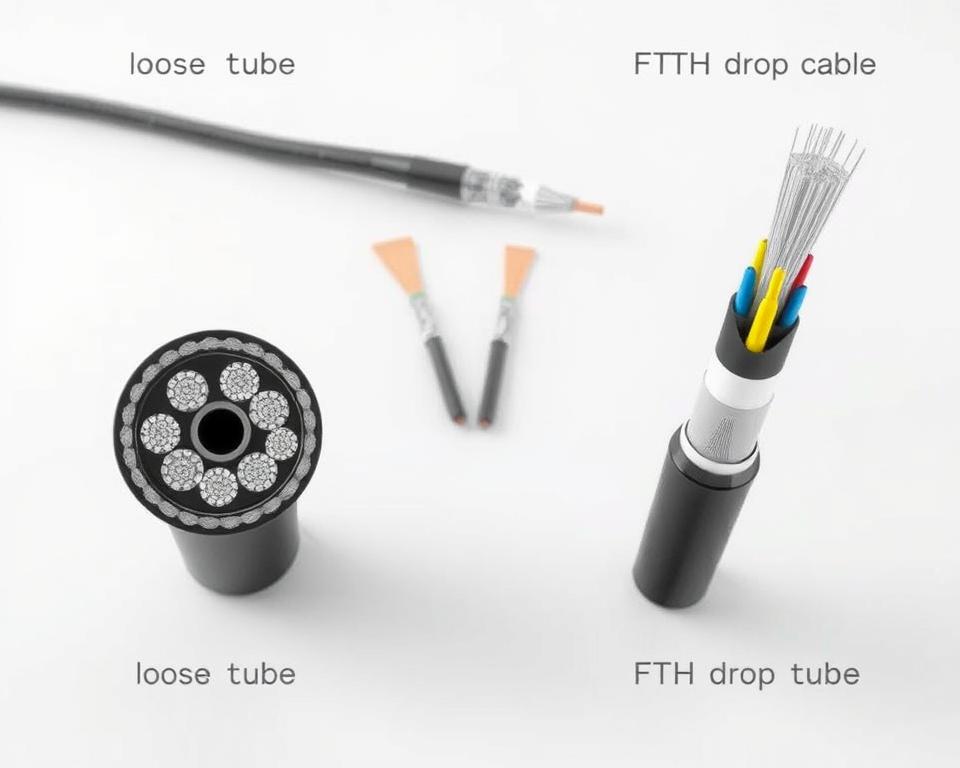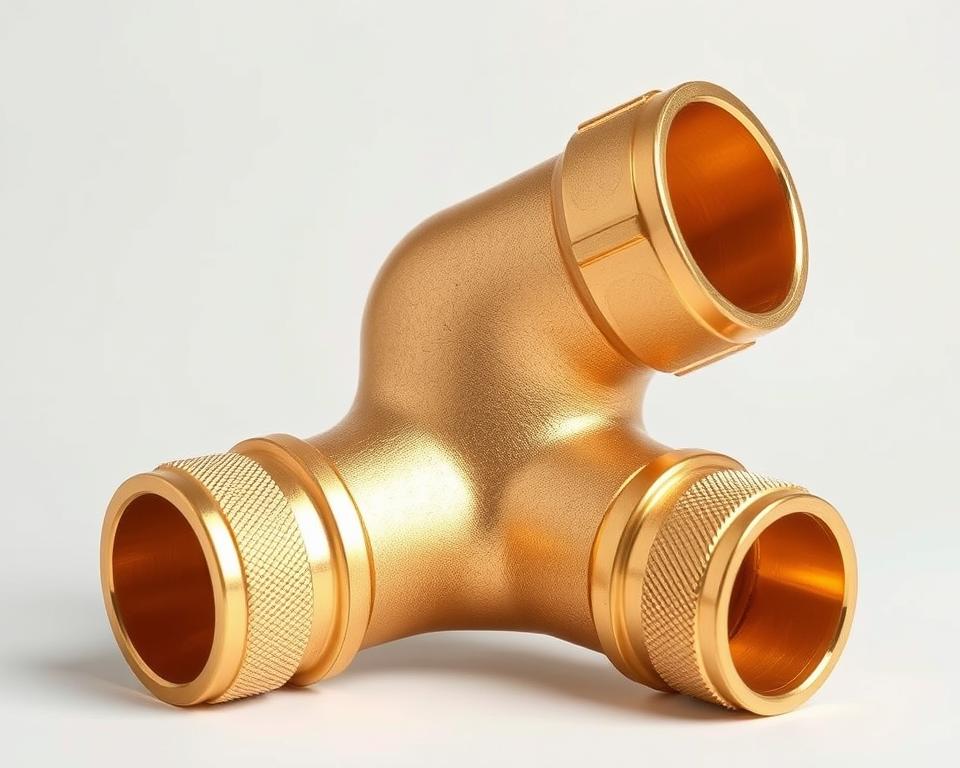A Complete Overview of the FTTH cable Production Line
Here’s a complete overview of the FTTH cable production line. In this comprehensive article, we will delve into the world of fiber optic cables and their crucial role in enabling high-speed data transmission. As the demand for internet connectivity that is both faster and more reliable keeps increasing, understanding the fine points of FTTH cable production becomes essential. Covering the essentials of cable infrastructure to the detailed manufacturing process, this guide aims to provide you with valuable insights into the production of SZ stranding line.
Whether you are new to the industry or looking to enhance your knowledge, this guide has you covered. This guide will delve into the essential components of FTTH cable systems, the function of optical fibers in FTTH technology, and how raw materials are turned into top-quality fiber optic cables. In addition, we will discuss the design considerations, stranding techniques, buffering and jacketing processes, and the efficient operation of the FTTH cable production line.
Keep reading to learn about the advanced technologies that are changing FTTH cable manufacturing, along with the significance of testing and quality assurance in guaranteeing the reliability and durability of fiber optic cables. The final steps of packaging and distribution will also be covered, ensuring the FTTH cable production line runs smoothly from beginning to end.
Main Points:
- Providing high-speed data transmission is a key function of the FTTH cable production line.
- It’s crucial to understand the fundamentals of FTTH cable infrastructure and its main components.
- Fiber drawing, coating application, and testing are the steps in the FTTH cable production process, which starts with silica and ends with fiber.
- To optimize performance, it’s important to design configurations and layouts that meet specific network requirements.
- Stranding techniques and central strength members contribute to the support and protection of the fiber.
Understanding FTTH cable Production Basics
To grasp how FTTH cables are produced, a clear understanding of the cable infrastructure, main components, and the function of optical fibers in FTTH technology is necessary.
Fundamentals of FTTH cable Infrastructure
The FTTH cable infrastructure is the system of cables, connectors, and distribution points that makes data transmission possible in fiber-to-the-home (FTTH) systems. Serving as the core of high-speed internet connectivity, it facilitates uninterrupted data transfer between the network of the provider and the end user’s site.

Key Components of FTTH cable Systems
Working together, several key components in FTTH cable systems ensure the smooth and efficient transmission of data. These components include:
- These fiber optic cables carry data signals as light. Their design focuses on high bandwidth and low signal loss, which guarantees fast and reliable data transmission.
- Playing a crucial role, connectors join fiber optic cables to other cables or devices, making it easy to connect and disconnect them when necessary. Signal loss is minimized by the secure and reliable connection they provide.
- Multiple end users receive divided and distributed fiber optic signals through the use of distribution points. Ensuring that each user gets the right amount of bandwidth without affecting the overall network performance is one of their functions.
Significance of Optical Fibers in FTTH Technology
The most important part of FTTH technology is optical fibers. These thin strands of glass or plastic are designed to efficiently transmit data signals in the form of light pulses. Their high bandwidth capacity, low signal loss, and resistance to electromagnetic interference make optical fibers ideal for high-speed data transmission.
A core that carries light signals is at the center of these fibers, and it’s surrounded by a cladding layer that reflects the light back into the core, thus preventing signal loss. Because of this design, optical fibers can transmit data across great distances without any loss in signal quality or speed.
The Journey from Silica to Fiber: A Step-by-Step Guide
The Art of Fiber Drawing: Creating the Cable’s Core
To start the FTTH cable production process, fiber drawing is performed to craft the core of the cable. This process involves pulling and stretching a glass preform made from silica, converting it into a long, thin fiber. The diameter of the fiber is precisely controlled during fiber drawing to guarantee optimal performance. The core’s quality and composition play a crucial role in determining the cable’s ability to transmit data efficiently and accurately.
How Coating Application Ensures the cable’s Durability
Coating application is the step that follows fiber drawing. The fiber receives a protective layer, known as a coating, at this stage. Acting as a buffer against external factors like moisture is just one of the purposes of the coating, which also improves the fiber’s long-term durability and reliability. The coating material is also carefully selected to have the necessary mechanical properties, guaranteeing that the fiber remains intact and protected during its entire lifespan.
Fiber Testing: Quality at Every Stage
The quality and performance of the fiber are verified through fiber testing, which is done at different stages of the FTTH cable production process. These tests involve measuring the fiber’s physical characteristics like diameter, attenuation, and tensile strength, and also checking the coating for uniformity and how well it sticks. These tests are crucial for ensuring that the fiber meets the required standards and specifications, guaranteeing the overall quality and performance of the final FTTH cables.
| Production Stage | Parameters Tested |
|---|---|
| Fiber Drawing | Diameter, Attenuation, Tensile Strength |
| Coating Application | Coating Thickness, Uniformity, Adhesion |
FTTH cable Production: Testing Parameters at Different Stages (Table)
Above is a table that summarizes the testing parameters measured at various stages of the FTTH cable production process. To ensure the high-performance and reliability of FTTH cable systems, manufacturers conduct rigorous testing to verify that every fiber used in the cables meets the required quality standards.
Creating FTTH cable Configurations
The design of cable configurations is a vital aspect of fiber-to-the-home (FTTH) cable production, as it helps meet network requirements and optimize performance. cable design involves considering factors such as network capacity, scalability, and the desired speed of data transmission. Customizing cable configurations to fit specific needs allows companies to deploy their network infrastructure efficiently and get the most out of it.
A variety of FTTH cable configurations and layouts are available, and each has its own advantages and considerations:
- The Daisy Chain Configuration involves connecting each subscriber in a sequence to the main distribution point. It is a cost-effective solution suitable for areas with low subscriber density.
- A direct connection between each subscriber and the central office or hub is characteristic of the star configuration. Because of its flexibility and easy maintenance, this design is perfect for areas where many people live close together.
- The ring configuration connects subscribers in a circular pattern. Redundancy and the ability to keep working even if there’s a fault are features of this configuration, ensuring service continues if the network fails.
- In a tree configuration, individual subscribers are connected to secondary distribution points, which are connected to the main distribution point. It’s a configuration that allows for easy network growth and is often used in areas with many subscribers.
- High reliability and redundancy are features of the mesh configuration, which provides multiple connections between distribution points. For applications where it’s essential that service never be interrupted, this configuration is commonly used.
Considering the network requirements and how much growth is expected in the future is essential when designing FTTH cable configurations. Depending on factors like how many subscribers there are, where they are geographically located, and what services are needed, the right configuration should be selected, as each has its own benefits and drawbacks.
Careful evaluation of these factors, along with collaboration with industry experts, enables companies to design FTTH cable configurations that are specifically suited to their network requirements and provide optimal performance.
Understanding Stranding Techniques and Equipment
The strength and durability of FTTH cables are greatly influenced by the stranding techniques and equipment used in their production. Various stranding patterns are used, and each one has its own benefits and is suitable for different purposes. The efficiency and quality of cable production depend on choosing the appropriate stranding machinery. The reliability of FTTH cables is also improved by central strength members, which offer additional support and protection to the fiber.
A Look at Different Stranding Patterns
One of the key aspects of FTTH cable production is the selection of the appropriate stranding pattern. The characteristics that are wanted in the cable will determine which stranding pattern is used, and examples include reverse concentric, SZ stranding, and helical stranding. Flexibility, strength, and resistance to things outside the cable can all be improved by the unique features that each pattern offers. Careful selection of stranding patterns ensures that the specific requirements of the application are met, which leads to optimal performance and a long lifespan for the FTTH cables.
The Importance of Selecting the Correct Stranding Machinery
Without stranding machinery, the FTTH cable production line wouldn’t function. It allows for the accurate creation of the stranding pattern and ensures that the fibers are kept at the right tension and in the correct alignment. Factors like the cable’s diameter, the speed at which you need to produce it, and the level of automation you want will determine which Fibers in stainless steel tube machinery is right for you. Because advanced stranding machines are more efficient and flexible, manufacturers can produce a large number of cables and also offer customization.
Role of Central Strength Members
Central strength members are used in FTTH cables to enhance their mechanical properties. They provide stability, enhance tensile strength, and protect the delicate fiber within the cable. Typically made of materials like aramid or fiberglass, the central strength members act as a backbone, reinforcing the cable structure and offering resistance against external forces. Because they are there, FTTH cables can handle the stresses of being installed and keep the signal transmission working properly, which makes them good for different ways of deploying them.
Fiber Protection: Buffering and Jacketing
The delicate fiber inside FTTH cables is protected by the crucial buffering and jacketing processes used in their production. By going through these processes, the fiber is protected from many potential dangers, such as moisture, rubbing, and other things outside the cable that could harm how well it works and how long it lasts.
Why Buffering is Important in cable Production
During the buffering process, a protective layer is applied to the fiber, and this layer serves as a barrier against environmental elements. Water from getting in is prevented by this layer, which can lead to the signal getting weaker or even the fiber breaking. The cable’s resistance to wear and tear is also enhanced by buffering, which reduces the risk of damage during installation or maintenance.
The buffering materials that are used must stick to the fiber excellently and have a low coefficient of friction to keep stress on the fiber to a minimum. The appropriate buffering material to select will depend on factors like the environmental conditions the cable will be in and the level of protection that is needed.
Selecting Materials for Effective Jacketing
To further protect the fiber and the buffering materials, an outer layer is applied in a process called jacketing. To offer robust protection from mechanical stress, impact, UV radiation, and other potential hazards, the jacketing material is carefully chosen.
When selecting jacketing materials, you need to think about things like flexibility, how well it resists fire, and if it’s compatible with the environment. Some of the materials that are commonly used for jacketing include polyethylene (PE), polyvinyl chloride (PVC), and low-smoke zero-halogen (LSZH) compounds. The specific application and the standards set by the industry will dictate which material is chosen, as each has its own benefits and drawbacks.
Latest Advancements in Jacketing Technology Application
The way FTTH cables are protected has been revolutionized by the progress in jacketing technologies. These latest technologies provide better strength, more flexibility, and improved resistance to environmental factors, leading to greater durability and reliability.
One of the innovative jacketing technologies includes tight-buffered cables, where each fiber is individually buffered with a thin layer of plastic, providing excellent protection and flexibility. Micro-ducts are another technology, and they use strong tubes to hold multiple fibers, which allows for high density and makes cable installation versatile.
Moreover, there are jacketing technologies that are specifically designed to meet the needs of different industries. For instance, cables used in harsh outdoor environments might incorporate armored jackets, providing superior protection against rodents, moisture, and extreme temperatures.
FTTH cables can be customized to suit the requirements of different applications by taking advantage of the latest jacketing technologies, which ensures they perform optimally, have a long lifespan, and are reliable.
Operations on the FTTH cable Production Line
The FTTH cable production line relies on efficient operations to ensure a smooth and streamlined manufacturing process. The production of high-quality fiber optic cables for high-speed internet connectivity relies on each step in the production line being vital. To achieve optimal efficiency, various machinery and equipment are utilized.
Preparing the raw materials, including the silica used for fiber drawing, is the first step in the manufacturing process. The process then moves on to fiber drawing, where the cable’s core is carefully made to achieve the desired specifications. After that comes coating application, which makes sure the fiber is durable and protected.
Because quality is so important, rigorous fiber testing is carried out at every stage of the production line to ensure the cables meet the highest standards. This includes testing for factors like attenuation, bandwidth, and signal loss.
The operations of the FTTH cable production line depend on efficiency. Manufacturers can get the most out of their production by using machinery and equipment in the best way, which reduces time and costs while increasing output. Furthermore, when the processes are efficient, the quality of the cables is generally better.
The manufacturing process can be complicated, with various stages and components involved. If manufacturers focus on efficient operations and always look for ways to make things better, they can improve how efficient and effective their FTTH cable production line is.
The following table summarizes the key machinery used in the FTTH cable production line and what each machine does in the manufacturing process, to give you a complete understanding of how it all works:
| Machine | Role |
|---|---|
| Fiber Drawing Machine | Produces the fiber optic cable core by pulling and stretching the silica material. |
| Coating Machine | Applies a protective coating to the fiber optic cable, ensuring durability and resistance to external factors. |
| Fiber Testing Equipment | Conducts various tests on the fiber optic cable to ensure quality and performance. |
| Spooling Machine | Winds the finished fiber optic cable onto spools for packaging and distribution. |
| Jacketing Machine | Applies an outer jacket to the fiber optic cable, providing additional protection and enhancing its handling. |
Using advanced machinery and technologies allows manufacturers to make their production line operations more streamlined, improve efficiency, and deliver high-quality FTTH cables that meet the rising demand for high-speed internet connectivity.
Latest Technologies Used in FTTH cable Manufacturing
For the FTTH (Fiber to the Home) cable manufacturing field, which is always evolving, advanced technologies are key to improving efficiency and quality. Automation, AI integration, and fiber coloring machines have completely changed the production process due to the increasing demand for high-speed data transmission, which has driven innovation and led to the creation of superior products.
Automation in Fiber Optic cable Production
Manufacturing of fiber optic cables has been greatly changed by automation. The manufacturing process can be controlled very precisely thanks to advanced machinery and robotics, which leads to consistent quality and fewer errors. Higher productivity, faster production, and better accuracy are all benefits of this automation, which ultimately leads to cost savings and enhanced customer satisfaction.
How AI is Integrated for Quality Control
Using artificial intelligence (AI) in the quality control process allows FTTH cable manufacturers to reach new levels of accuracy and reliability. AI algorithms have the ability to analyze production data as it happens, identifying any changes or issues that could affect the quality of the cables. This proactive method of quality control helps to minimize errors, make production more efficient, and guarantee that only the best FTTH cables are put on the market.
How Fiber Coloring Machines Work
The way FTTH cables are manufactured has been revolutionized by the introduction of fiber coloring machines, which provide improved customization options. Fiber coloring machines can apply color codes to optical fiber strands, allowing for easy identification and efficient cable management during installation and maintenance. This technology eliminates the need for manual color coding, reduces the risk of errors, and enhances the overall efficiency of cable deployment.
Fiber Optics: Ensuring Quality Through Testing and Assurance
For fiber optics, it’s extremely important to make sure the quality is as high as possible. To achieve this, rigorous testing and quality assurance measures are implemented throughout the production process. Playing a crucial role, standardized testing protocols guarantee the reliability and consistency of fiber optic cables.
Implementing Standardized Testing Protocols
Standardized testing protocols are set up to guarantee that each and every fiber optic cable meets the necessary quality standards. During every step of the production process, specific testing procedures and criteria that must be followed are outlined in these protocols. By adhering to these protocols, manufacturers can identify and address any potential issues, ensuring that only the highest quality cables are delivered to customers.
How OTDR is Used for Quality Checks
Optical Time-Domain Reflectometer (OTDR) is an essential tool for checking the quality of fiber optic cables. By sending out light pulses, OTDR, a testing instrument, measures the loss and reflection of signal along an optical fiber. Technicians can find problems like fiber bending, signal loss, or damage to connectors by looking at the OTDR traces. This enables them to pinpoint the exact location of any faults and take corrective actions, ensuring the overall quality and performance of the cable.
How to Maintain High Quality Assurance Standards
Fiber optic cables are guaranteed to perform consistently and reliably because quality assurance standards are maintained throughout the entire production process. Material selection, how the cables are made, and testing of the final product are all covered by these standards. Manufacturers can guarantee that their products meet the highest quality and performance levels required by the industry by following these strict standards.
The Last Steps: Packaging and Distribution of FTTH cables
In this section, we will look at the final stages of compact fiber unit production, including how they are packaged and distributed. After the cables have been manufactured, it’s important to package them correctly and efficiently to make it easier to deploy and install them. Furthermore, protective packaging solutions are important for safeguarding the delicate fiber optic cables when they are being transported and stored. Efficient logistics and supply chain management are crucial for making sure FTTH products are delivered to customers promptly and effectively meet their connectivity needs.
Techniques for Efficient cable Spooling
Using efficient techniques to spool cables is vital for making the installation of FTTH cables smooth and convenient. Storing and transporting cables in an organized and practical way is possible with cable spools, which also reduces the chance of them getting tangled or damaged. The deployment process becomes quicker and easier for cable installers when they use optimized cable spooling techniques. When cables are spooled properly, the installation looks neater and more professional overall.
Protective Packaging Solutions for Fiber Optic cables
Effective protective packaging solutions need to be used to protect the delicate fiber optic cables while they are transported and stored. Cushioning, shock absorption, and resistance to external factors like moisture, dust, and physical impact should all be provided by these solutions. The use of high-quality packaging materials and techniques ensures that the fiber optic cables will arrive at their destination in optimal condition, ready to be installed by manufacturers. This not only keeps the cables in good condition but also makes customers happier by reducing the chance of damage or the cables not working as well as they should.
Best Practices for FTTH Product Logistics and Supply Chain
The successful delivery of FTTH products to customers depends on efficient logistics and supply chain management. This involves carefully planning the transportation, storage, and distribution of the cables to ensure timely and reliable delivery. By managing the supply chain well, delays can be minimized, products can flow smoothly, costs can be reduced, and customer service can be improved..
To Summarize
In summary, this ultimate guide to the FTTH cable production line has offered a comprehensive overview of the process of manufacturing fiber optic cables for high-speed internet connectivity. The importance of FTTH cable production line in enabling fast and reliable data transmission has been emphasized throughout the article.
Seamless communication, streaming, and online activities are facilitated by fiber optic cables, which play a critical role in high-speed internet connectivity. From fiber drawing to buffering and jacketing, the step-by-step process of FTTH cable production makes sure these cables are durable and of high quality.
Efficiency and accuracy in the manufacturing process have been increased thanks to advanced technologies such as automation and AI integration, which have revolutionized it. In addition, standardized testing protocols and rigorous quality assurance standards guarantee the reliability and performance of fiber optics.
The final stages of FTTH cable production are packaging and distribution, and these ensure that these essential cables are deployed efficiently and protected during transportation. The expertise and precision that go into the FTTH cable production line are essential for meeting the growing need for high-speed internet connectivity worldwide.


